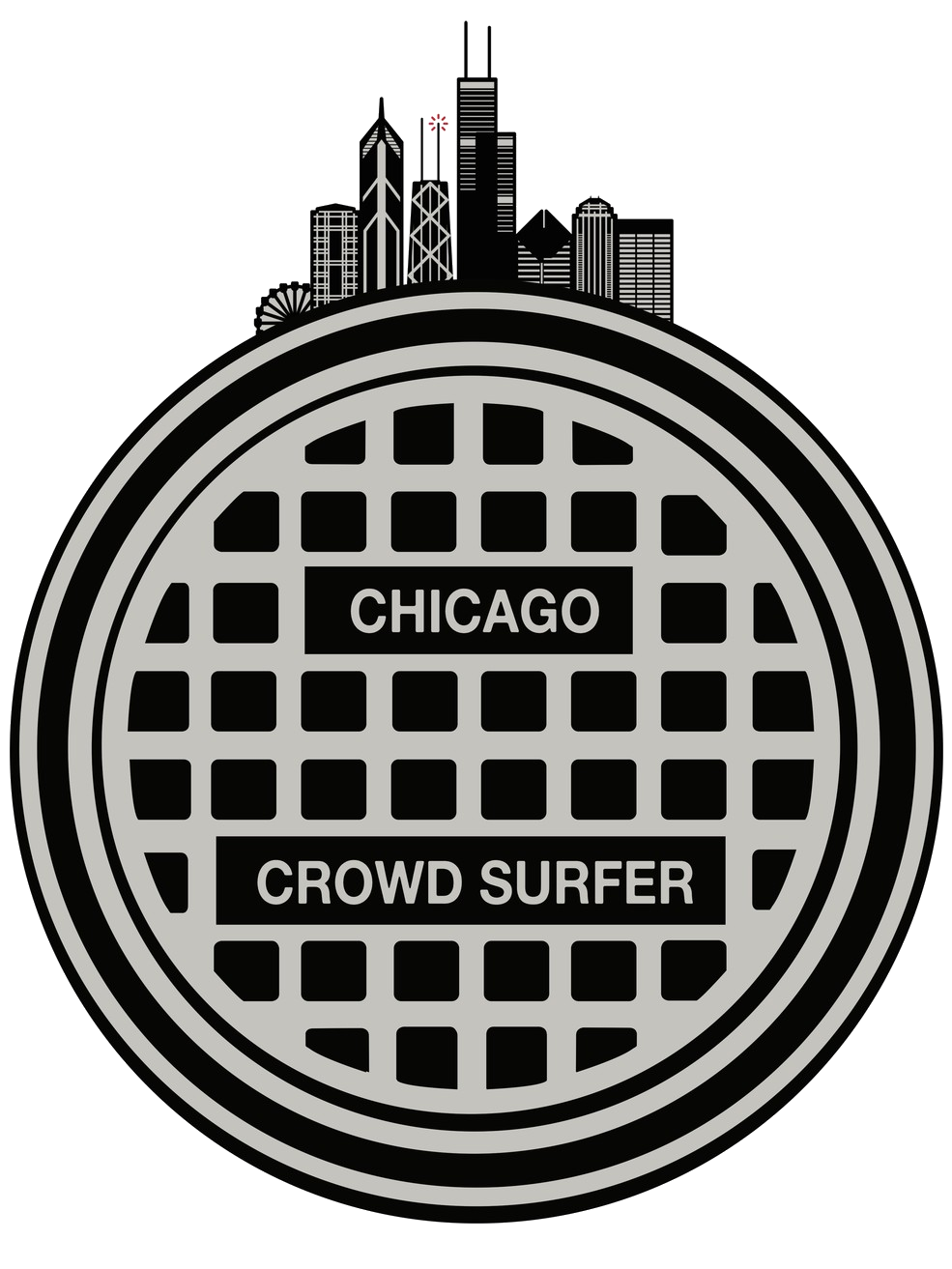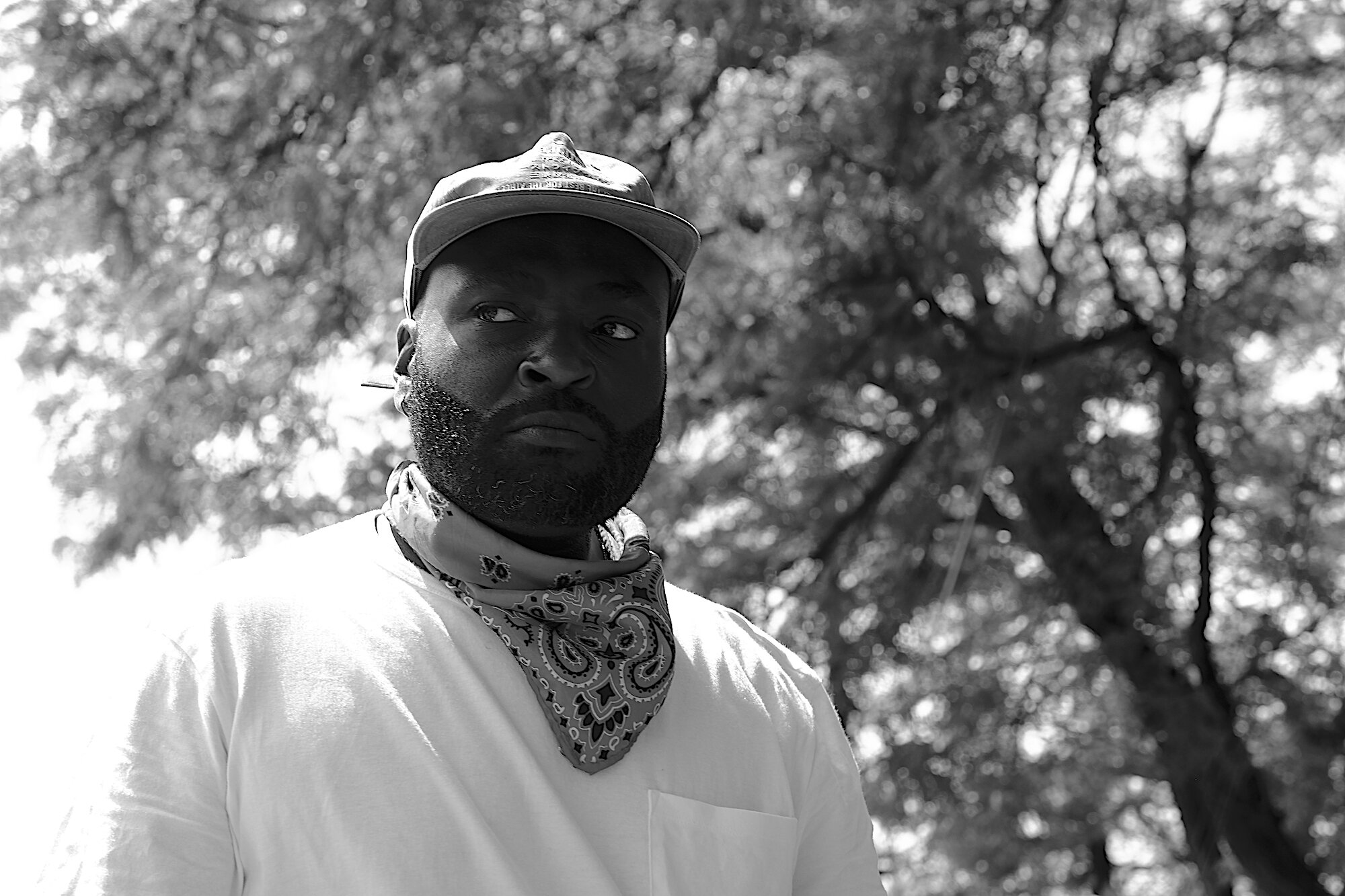⬐ Amplify ⬎
Roy Kinsey
📷: Tina Mead
When Chicagoan and rapbrarian Roy Kinsey came out of hiatus in 2018, after a five year absence from the hip-hop scene, he brought a record of his family to the forefront. Dedicated to his Grandmother, who traveled with his Mother to Chicago from Mississippi in 1965, Blackie: A Story By Roy Kinsey is a journey through the Black experience and musical history that announced the return of an important voice in the local hip-hop and queer communities.
Blackie album cover
After leaving his rap career behind to study for his Masters in Library Science he found himself affected by the current political and social climate. “The first time in my life I was of age to watch the injustice happen. Before I would have a song or two on my album,” he said, “But this was the first time in my life I had seen, like Mike Brown or Trayvon Martin, the first time I had seen on video someone kill a black man and walk away… It shifted me, and there are moments that shift you in life. I remember 9/11 happened, I was in high school and that changed me in a way, and so the relationship with being Black and with the media had something to do with it… a lot of stuff shook me awake. I felt that I hadn’t done what I wanted to do as an artist. I hadn’t made the album of my life yet.”
Then a chance meeting with an old friend, producer Mike Jones, led to a creative explosion, “I really changed in so many ways during that time, and then I found one of my homies (Jones) who executive produced the album. I just needed one other person who would be down like I would be down.” Kinsey made every sacrifice he could to produce the album he wanted: “I got sober for that album. I was sober for a little bit, while making it and performing it. I needed the clarity to get that thing done and realizing I need to sacrifice some things for it… When my mind was working, it was really putting out the art I knew I wanted to make for my entire life.”
Kinsey album cover
After taking a look back it was time to look within. His next project Kinsey: A Memoir, which dropped at the end of February, reflects on the artist’s youth, his coming out, the varied experiences of being a gay man in Chicago, his inner thoughts and fears, and the power of art in life. A searingly honest portrait of himself, Kinsey wasn’t just therapy, it was a project to give the world an example of survival and perseverance, “Kinsey is made up of me recalling how I felt and what I needed when I was that age. Those are extremely formative years and I want to show young teens that they are of value in the things they are feeling at this moment.” he iterated.
A process that he carries into his work with teens at the CPL where he is a librarian in the Teen Services/Youmedia department. “There are so many clues in what they think and gravitate toward right now that is going to be the set up for their lives,” the artist says, “So i just try to tap in and understand who are we, let's do some inner work and try to uncover these things about ourselves. Because you’re going to be a version of who you are right now in five and ten and twenty years. A lot of us don’t really know ourselves and we never have the opportunity to know ourselves well. So I try and do a lot of inner work and show teens how to do something similar.”
📷: Tina Mead
Having discovered hip-hop at an early age he gravitated to the art form with a passion, keeping notebooks of rhymes as a teen. “It was so powerful, and so mysterious and so free, I hadn’t seen anything else quite like that.” Music came easy because it was in his roots. “I’m from a musical family, we love music, we speak in music; but not only performing it and seeing rappers not only be rich, but be free enough to have their own expression. Thinking about the golden era of hip hop and seeing how there were so many different examples of how to be,” he said. It just came naturally to him: “I gravitated towards it like a fish to water. It’s my expression. It’s how I speak, how I think. I didn’t really feel like I had seen many examples of black folks being free and saying what they wanted.”
Entering the scene in 2010 with his debut Keep the Receipt, Kinsey was immediately embraced by fellow queer rap scenesters like label Futurehood, “They were telling me from my first album that I was a legend, and that I was incredible and the world needed me from early on.” he said, “There are stories that could be told, and you experience those things, but I get a lot of love from Chicago; and I’ve gotten way more love being exactly who I am.”
After a few years it became clear he needed to hit pause on his art for the sake of his librarian career and he returned to school after putting out his second record Beautiful Only. “Because my path was different. I went to school and got my masters and took this storytelling class where I would coin this moniker rapbrarian, I understood my role and I understood my service better than if I was scooped up and signed to a label.” Kinsey exclaimed. Returning to his art took it’s time but was worth it in the end: “I’m understanding the role and a responsibility of an artist and it’s not what I previously thought,” he said, “I need the world to look at rap and take it seriously. Let's talk about our rappers like we talk about Robert Frost and Carl Sandberg. Are we not poets? This is literature. I’m glad I get the opportunity to do it… I want to be heard and I have a story to tell. It needs to be taken seriously and be uninterrupted.”
📷: Tina Mead
In his work, a role in the community came into focus and he became a positive influence on the youth that come through CPL’s classes and programs, “I like to be an example of putting a bunch of stuff together that didn’t necessarily go together. I love that they come in and see a Black male librarian that knows how to rap. In a field that is normally dominated by women, and usually dominated by white women. When you think about information and who has access to it, I love that young kids see me as that. I love that they know a Black male librarian that raps,” he said. An influence that he takes very seriously, “I like what imagination means, and what imagination can mean. And helping them to understand their value and their contribution,” said Kinsey, “I understand the importance of teens needing to be taken seriously and have creative outlets and having their personalities nurtured.”
Naturally gravitating to independence, Kinsey and Jones have released both Blackie and Kinsey themselves under their own HOM/Fantastic Sounds moniker. A process that can be taxing, “It can be difficult sometimes just doing everything. You are booking your own shows, you’re your own agent, your own PR person, you’re all the roles. And I felt it, I really did get burned out after Blackie. People always ask ‘how do you do so much,’ but that’s the hardest part having this thing you started. We're a start-up, we started a business,” the artist said. But he is appreciative of all the help he has received: “The hardest part is wearing so many hats. By the time people see you on stage, that’s cute, but it took so much to get there. Luckily with the people that we have we’ve been able to do so many incredible things. I do love all the support that I get. Because I wouldn’t have been able to do even half of this without that.”
📷: Tina Mead
However, Kinsey wouldn’t have it any other way. “It’s the price you pay when you love this so much. When you love making art.” he said, “Clearly I make art as my offering. It will never not be that. I hold it in a high regard. Art saves people. Art changes peoples lives. Art changes the world. I’m going to be trying to make art for the rest of my life.” A treatise that has become a mantra to him in a way, “A lot of times artists get into the game for what they can get. And it really wasn’t until the last few months, that I realized I am here to give something. I am here to be of service. Very much as the art has played a role in my life, all those rappers that gave me a possibility of a new identity: ‘you can do this, you can try this’. I’m just really trying to add to the cannon. Because I know what the cannon is used for. This is a bank that people use to try and get through.”
Roy Kinsey creates art that is intended to help society understand his life and perspective, and the current movement is a conflicting prospect. “I’ve always known my life mattered. As much as one can be excited and happy about everything that’s happening, and people taking to the street. Someone like me is also like ‘where you all been?” I’ve been saying this, my ancestors been saying this,” says the artist, “What are we talking about? We’re talking about humans, we’re talking about humanity, so it’s always been real fifty-fifty with me. I am glad that people are excited. I am glad that change is happening on a lot of levels. I love that people's emotions are engaged and people are posting on social media. There are so many roles, so many things to do. I hope that people are dedicating their lives to seeing that all Americans feel the safety that some Americans feel. I’m hoping that as an American you would want that for every other person that’s American. This younger generation ain’t having it. You promised us so many things and we’re here now talking about our earth and the people on it.”






